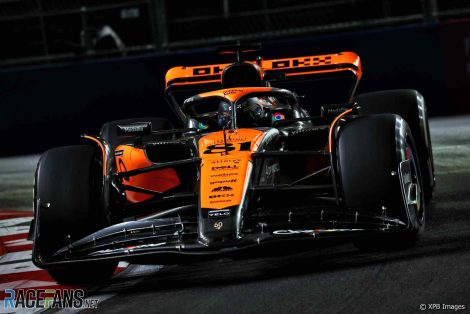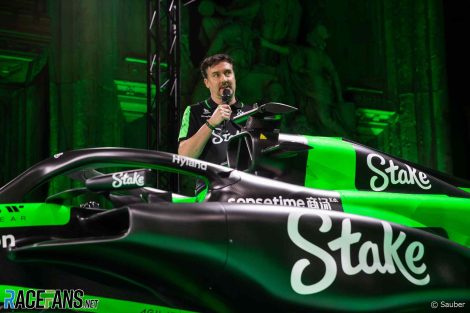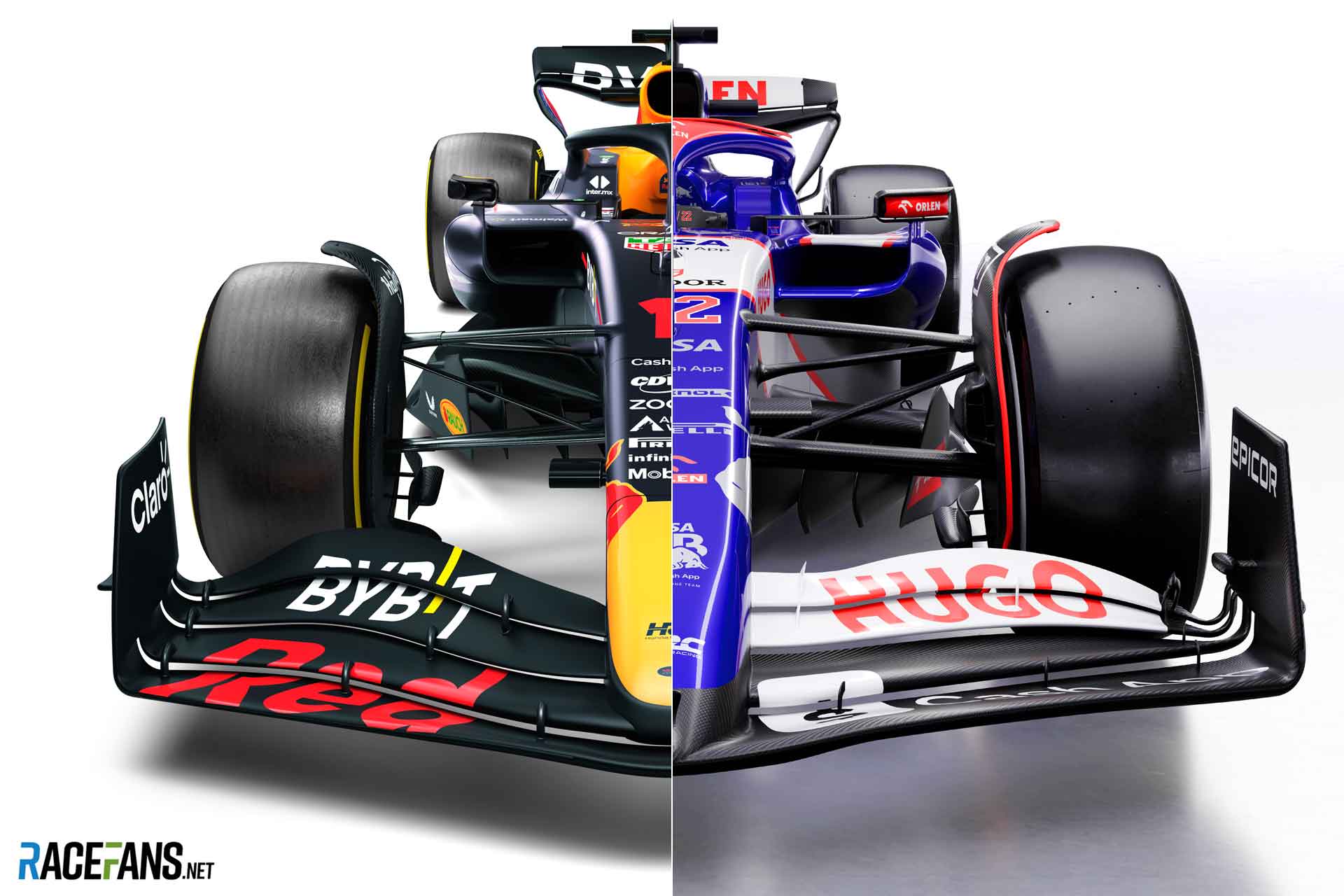After a Formula 1 season utterly dominated by Red Bull it would be no surprise if their rivals borrowed a few design cues from their all-conquering RB19.
Indeed, so crushing was Red Bull’s superiority last year, it would be a surprise if most of them didn’t. The team’s star driver Max Verstappen and chief technical officer Adrian Newey have already indicated the RB20 will be an evolution of its predecessor.While no single aspect of the car’s design can be held up as key to its success, a defining trait of Newey’s designs stretching back to his first F1 chassis has been the primacy of aerodynamics. He has never been shy of making compromises elsewhere in order to perfect the flow structures around his creations.
Whether he’s been squeezing drivers into ever-narrower cockpits to reduce drag, blowing exhaust gases in the diffuser to boost its performance or tilting the chassis into extreme rakes to conjure more downforce from the front wing, Newey has been undaunted by any engineering challenges hindering his pursuit of aerodynamic perfection.

Newey charted his usual individualistic approach to the latest generation of technical regulations, choosing a pull-rod arrangement for the RB19’s front suspension instead of a conventional push-rod. A push-rod compresses when a car goes over a bump while a pull-rod, as the name implies, does the opposite.
The different geometry of a pull-rod layout is key to its appeal to Red Bull and the only other team which uses the same approach on their car. That is McLaren, who made significant strides with their MCL60 last season and were often the biggest threat to Red Bull.
Advert | Become a RaceFans supporter and
Of the three teams which have revealed details of their 2024 car designs (McLaren and Haas have only shown their new liveries), two have switch to a pull-rod layout for their front suspension. Unsurprisingly, Red Bull’s rebranded second team RB is one of these, having stated last year it would follow the design lead set by its successful sibling in 2024.
The other is Sauber, where technical director James Key arrived last year from McLaren. He expects more teams to follow Red Bull’s design lead because of the advantages the layout offers.“We did it when I was at my last team, McLaren, from the outset,” he told RaceFans in an exclusive interview. “For the same reasons.
“I suspect we’ll see more this year, that’s my guess, because it is fundamentally the right thing to do.”
However Key said the challenges the suspension layout presents shouldn’t be underestimated. “It’s a horrible project mechanically,” he explained. “Difficult, it adds weight the car as well, it has many, many drawbacks.
“But aerodynamically, it is absolutely the right thing to do. And if you can overcome the drawbacks – which is a big challenge, it’s not an aerodynamic challenge, it’s overcoming the difficult parts of design – it’s a quicker car, it would make sense to do it.”
Advert | Become a RaceFans supporter and
While RB can draw on its close relationship with Red Bull to obtain certain suspension parts in line with F1’s rules, Sauber has developed a solution of its own. Key explained why a pull-rod configuration is trickier to perfect than a more conventional arrangement.

“With the push-rod, you normally achieve a steeper angle which means you’re resolving the forces in a much more efficient way. And you got damping in compression which is a little bit more efficient structurally as well.
“That transfers the loads in a way which is a little bit more coherent for everything inside the chassis that’s reacting to it: the push-rod’s on a rocker, it’s in heave, which [means] obviously as you’re coming with the car coming down towards the ground, with both your wheels moving by the same amount, you’re compressing something in sort of a logical way and so on. So it kind of works naturally with the push-rod.”
However with a pull-rod “everything is back-to-front and doesn’t really want to work,” says Key. It is difficult to package it neatly within the chassis while allowing the mechanics to easily make set-up adjustments.
“Structurally with your actuation mechanism, it’s not as good and you can’t achieve that steeper angles, the tension, which is not great,” he said. “As far as the pull-rod is concerned, you’re actuating slightly backwards. You could have bulges in your chassis to try and change that, but it’s not ideal. So you’ve got to play with the internals, it’s more complicated.
Advert | Become a RaceFans supporter and
“They’re also further away and also in an area of the chassis which can lose quite a lot of stiffness if you’re not careful, so you’ve got to brace all those areas. If you’re up at the top in a Formula 1 chassis it’s far more structurally efficient than down at the bottom where you’ve pedals and other things around. It’s much more difficult to stiffen it up to the level you need.
“So there’s a great many challenges, both kinematically I suppose in terms of your layout of your suspension as well as structurally to try and extract an equivalent level of stiffness and coherence about the way that joint sits.”
While the decision to follow Red Bull’s lead on suspension may have been a straightforward one for RB to follow, it was clearly more of a challenge for the likes of Sauber. Mercedes, Ferrari and Aston Martin are set to present their new cars next week, which will tell us whether any of Red Bull’s closest rivals have decided their suspension solution is a compromise worth making to meet the aerodynamic demands of F1’s current regulations.
Bringing the F1 news from the source
RaceFans strives to bring its readers news directly from the key players in Formula 1. We are able to do this thanks in part to the generous backing of our RaceFans Supporters.
By contributing £1 per month or £12 per year (or the equivalent in other currencies) you can help cover the costs involved in producing original journalism: Travelling, writing, creating, hosting, contacting and developing.
We have been proudly supported by our readers for over 10 years. If you enjoy our independent coverage, please consider becoming a RaceFans Supporter today. As a bonus, all our Supporters can also browse the site ad-free. Sign up or find out more via the links below:
Formula 1
- F1 CEO Domenicali wants more than six sprint races per year
- Hulkenberg named Audi’s first F1 driver for 2026
- Ricciardo needs to show “head-turning form” for 2025 chance – Horner
- F1 Commission defers decision on points change and approves new rear cameras
- Red Bull’s star designer Newey to leave team – reports





Zann (@zann)
9th February 2024, 12:33
very nice! I must look for some drawings
Leeroy
11th February 2024, 8:22
Great article. And it makes Ferrari and Merc look silly for not picking up on this in the first year of the regulations. The fact that Mclaren beat them both to the move to pull-rod sheds a poor light on their technical teams. Ferrari changed leader, i think its time for Merc to move on Toto.
BasCB (@bascb)
9th February 2024, 12:57
Thanks for another really interesting article where a team really gives some insight and information in how they are approaching things!
bosyber (@bosyber)
9th February 2024, 13:11
Indeed, very interesting read and nice bit of depth going into a launch season that likely will have a lot of renders (and lack of actual 2024 aero bits for now), enjoyable read and interesting stuff.
Andre
9th February 2024, 13:18
I thought that this year’s Toro Rosso would be using last year’s Redbull chassis. Where did I get that idea from?
Tristan
9th February 2024, 13:25
No idea, but it’s not possible within the regulations. Chassis must be a teams own IP. When Red Bull management went public saying the sister team should take everything from the main team, they always said within the regulations, as much as it allows. Chassis excluded.
The FIA technical regulations are all publicly available through their website if you want to have a look, “listed parts” is the relevant search term.
Tristan
9th February 2024, 13:20
I understand the difficulties and challenge as described, but not at all the benefits. I’ll have to look into why the pull rod benefits aero so much.
I did think it was interesting Alpine chose not to do it, and the compromise at the rear they spoke of.
It speaks to Newey’s ingenuity that everyone has to kind of follow his lead and try to improve upon it rather than any other name standing out as being able to compete by going in their own direction.
I wonder how much of that is pressure and a lack of belief that results are possible with further iteration. It must be hard when you’re on track being beaten by something that’s just clearly a different direction.
Hamilton was lobbying for it within his team and that must be frustrating as an engineer to somewhat throw away all the work on the fundamental concept. Assuming Mercedes do copy Red Bull in this area.
MacLeod (@macleod)
9th February 2024, 13:32
A hint Adrian Newey said he had to work on the suspension of RB19 and didn’t spend any time on the aero they just brought over from the RB18. The why is clearly you can drive the floor extreem low BUT stable in corners so the floor keep working…….
An Sionnach
9th February 2024, 14:05
Yes. I think it was flagged before the 2023 season began that one of the keys to the Red Bull car is that it has a suspension system that mimics active suspension without being active suspension. That might not even be accurate as a simplification (I don’t know), but active suspension would address the issues the teams have been struggling with – allowing the car to operate near to the ground without terribly affecting driver comfort. This news emerged a few months after it became apparent that Toto’s attempt to nerf the Red Bull’s suspected advantage with a mid-season rule change failed, and pointed out exactly why the car was so good.
From the sounds of this description, even if all teams decide to change their suspension system, it may take more than one year to get it right. It might be more practical for all affected teams (most of them) to lobby for a rule change and stick with what they have for this year. Wouldn’t be fair to Red Bull and perhaps McLaren, but they’d be outnumbered. It seems the current ruleset is very restrictive. Perhaps even Newey might agree with that considering his comments on how he can make a road car as fast as an F1 car using technologies that are banned from the sport. That’s the problem with very narrow rules – the unintended consequence of them seems to be that this is the only way to engineer the car. Since this isn’t very easy, engineering teams are almost snookered by the rules. If they were broader you could get all sorts of fun things, like cars with different types of engine that don’t look identical barring a few sparse touches of paint. Much has been made about the new regulations coming up. I think it would be a better use of F1, not as a sport, but an engineering project for mankind, if the regulations were blown wide open. That way, you could put all the money that goes into the sport to good use, and possibly develop some technologies that are beneficial to future motoring. Or, maybe not. It would certainly benefit the sport, though, not to be so straightjacketed. Perhaps even Red Bull and McLaren would be happy with this?
PacificPR (@streydt)
9th February 2024, 14:19
Indeed. That is my understanding as well. Suspension being the key to optimal floor efficiency. Hope Newey will explain it in detail in a couple of years.
Asanator (@asanator)
9th February 2024, 15:47
Alonso’s 2012 Ferrari had the pull rod suspension. One of the disadvantages of the pull rod suspension is tyre warm up and was largely attributed to Alonso’s relatively poor qualifying, however the trade off is better tyre wear which is why the F2012 was a good car in the races.
I have always suspected that this is why the redbull was often beaten by the Ferrari in Qualy last year and why it was better on its tyres and able to come through the field.
SteveR (@stever)
9th February 2024, 14:38
Pull rod front suspension is not a new idea and used to be very common in F1.
DonSalsa
9th February 2024, 18:00
Thank you!
Some people are making it sound as if front pull-rod suspension is an innovation from Newey on the RB18/19. It is not!!!
And even worse is that whenever a team decides to change something, it’s immediately labelled as RBR ‘copy’! Ridiculous!
RBR and Newey haven’t got monopoly over F1 car designs; other engineers elsewhere can also do their own original R&D and arrive at their own original designs, which may happen to look similar the RBR’s but far from a ‘copy’!
Newey is good but he’s been beaten on several occasions, the latest being in 2021 by Allison. Also in 2020, 2019 and 2018!!!
Boomerang
9th February 2024, 18:39
McLaren MP4/4 had it, and it wasn’t the first car nor the last one with this front suspension layout. Although I respect Key a lot, dramatizing about pull rod just proves the fact it is just a matter of perspective and what you’re used to. I can remember Gordon Murray pioneering the thing on BT49 which was a ground effect car. Obviously this concept fits better with the aero mostly generating downforce trough ground effect. It’s worthy to mention that Adrian Newey designed mostly cars with the push rod when the rules favored that kind of approach.
SteveR (@stever)
9th February 2024, 20:13
A quick skim through one of my books shows pull rod fronts were used by Ferrari, Brabham, Lotus, Minardi, McLaren, Lola, Leyton House March, and Zakspeed; this is not an exhaustive list
James Bond (@jamesbond)
9th February 2024, 17:49
It was a real pleasure to read this article.
FlyingLap (@flyinglapp)
9th February 2024, 20:23
The Red Bull suspension that’s really important is the possible suspension of Horner due to sexual allegations.
pcxmac (@pcxmac)
9th February 2024, 21:13
its not the suspension, its the misfiring scheme they have that helps drag the rear end in to the apex, from whence they bias the weight aft after hitting the gas pedal. Alpha Tauri had no issues around Brazil last year, helping them get around the last leg of the circuit at a higher rate of speed.
Why Red Bull Racing are allowed to use a traction control device?, other manufactures like Mercedes and Ferrari should be misfiring in to the apex, just like the MotoGP bikes. The definition of Traction Control in the FIA rule book is pretty glaringly close minded too. Like it was written in the 80s.
baasbas
10th February 2024, 9:22
@pcxmac
teams now a LOT about their rivals. They capture a lot of very specific data. When they detect foul play, they complain. Think about the Ferrari engine for instance. And that after the inspection they were nowhere.
I don’t know how you can say something like this with so much certainty. While if it were true, it would have been contested by rival teams immediately
scss (@scss)
11th February 2024, 21:58
Key mentioned the pull rod design “adds weight to the car”. Does the weight come from additional material to stiffen the chassis, or something else, or all of the above?